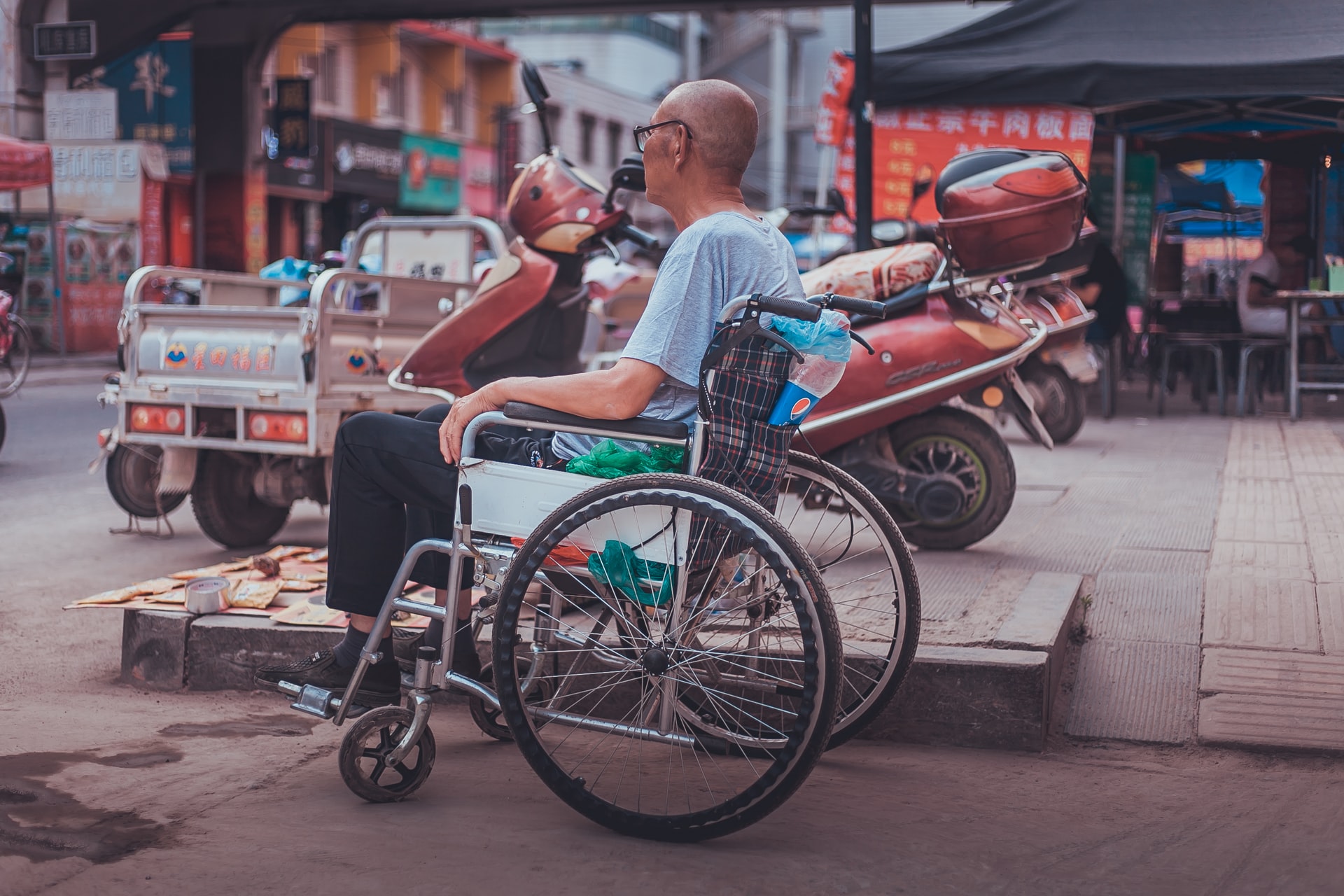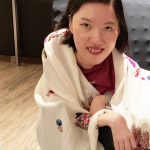Top image: 张 学欢/Unsplash
It was my mum who alerted me to the news on January 27 2022. “Have you heard about the father in Bukit Timah charged with the deaths of his two boys? Google it,” she said.
I didn’t know what to expect when I clicked on the article by the Straits Times. Was it a case of an inheritance dispute gone wrong? Whatever I expected, it wasn’t that the victims were only 11 and had “special needs.” I felt ill, thinking of how systemic ableism still sows harm, despite our progress on that front.
Nonetheless, I read every published report pertaining to this developing story. In another article, SG Enable urged caregivers to “look after their wellbeing” and reach out for support from loved ones and social service agencies. They then provided the number for the National Care Hotline.
Though meant to help, their urging felt hollow in the face of what transpired. For two lives—three, if you count the father—it was too little, too late. And as a disabled person and a primary caregiver, my mum and I knew all too well that the support available for us in Singapore was inadequate.
Problems in school
Hope*, a 63-year-old former lecturer and mother to two disabled sons, detailed the spectrum of experiences her eldest son, Matthew*—an autistic artist who has since passed away—experienced in international, mainstream, and special education (SPED) schools. He had done well in an international school but switched to attending a mainstream public school once the financial cost of his education became unsustainable.
However, there, the teachers weren’t trained to suit his needs. Matthew was then moved to SPED, where he was better supported academically and could learn at his own pace. “But he was always ahead of the class, and he always felt a little sorry [felt bad] that he wasn’t given [equal] input and teaching,” Hope said.
The rigidity of Singapore’s general approach to SPED education isn’t a critique held solely by Hope or other caregivers. On the opposite end of the spectrum, at the school where my aunt, a SPED educator, teaches, the academic standards placed on the school were too high for her students.
“It is challenging for all SPED schools to be put on the same curriculum as mainstream schools. As it stands, the needs of students are different in each class—what more if they’re from different schools. Their abilities differ, and the gap is relatively wide,” she explained.
My aunt later raised the topic of class sizes across mainstream and SPED schools, a more pronounced issue where disabled students are concerned.
For SPED schools, classes average at a teacher to student ratio of 1:7/8 but can balloon to as large as 14 students with two teachers. If someone has a meltdown, one teacher is tasked with calming that student while the second manages the other 13. It can be quite a handful.
A more hands-on-deck approach would greatly help, but funding is insufficient. My aunt cited the ageing computers and projectors at her school taking up time to load—time being a precious resource for SPED schools that always struggle with balancing the task of classroom teaching with that of imparting practical life skills.
The business of healthcare for disabled lives
Finances are an overarching struggle when it comes to supporting the disabled and caregivers. All three parents I spoke to felt that the public financial aid schemes available fall short and aren’t scaled to healthcare costs for disabled individuals.
“At the beginning, I would count the dollars and cents, but after a while, I gave up,” Hope said.
My mum brought up the life-saving equipment I depend on. “The staff told me [your first ventilator] costs S$10,000. I was so shocked. We didn’t have the money or subsidies [when you were young.] We had to borrow.”
Hope, her younger son Andrew*, who’s 26 and has muscular dystrophy, and my own family come from middle-income households. Hence, our concerns mainly lie with public financial aid and subsidies either being unavailable to us entirely or decreasing with income growth. This, despite medical bills remaining potentially crippling for anyone who isn’t born with a silver spoon.
She shared that homecare nurses told her some vendors mark up prices for what they deem a “small disabled market” in Singapore to cover their expenditures. Sometimes she had to turn to importing from vendors abroad, who offer the same items for less than Singaporean vendors.
Though low-income households qualify for more assistance, they still struggle to make ends meet. Melody, a 58-year-old early-childhood-educator-turned-homemaker, and her son, 26-year-old Josiah, who has ADHD and autism, come from one such household. They receive substantial subsidies and direct financial assistance from government bodies.
“Every three months, we need to apply for the CDC Financial Assistance,” Melody shares, exasperated. “It’s a very frustrating process. And even after receiving financial assistance, we’re still struggling to make ends meet.”
My mum and Hope felt similarly about the application processes required for myself and Andrew to receive our subsidies, citing the copious paperwork that needs to be submitted annually for means-testing.
Their financial stress is further compounded by the worry that Singapore will leave their children behind. Josiah, Andrew, and I are all employed, but all of us struggle to find employment, and we don’t earn enough to support ourselves.
Flexible jobs that accommodate the disabled are hard to come by, and jobs that allow us to contribute to our families and accumulate savings are even harder still. Data released by the Ministry of Manpower’s Comprehensive Labour Force Survey throughout 2018-2019 states, “68.2% of resident [people with disabilities] were outside the labour force, with most of them citing poor health or disability as the main reason.”
The social and economic value of the disabled
It struck me when going through Andrew’s and Josiah’s interview responses that, while they were hired despite their disabilities, I was hired because of mine.
Aside from writing for RICE Media, I’m also a disability advocate currently focusing on advocacy for my rare disease, spinal muscular atrophy, and gaming accessibility. As such, my disability is considered an asset by my peers and employers, not a deficit to look past or an object of charity.
It speaks to the social and economic devaluation of the disabled that my experience is a rarity. Workplaces and communities typically ask how they can accommodate us, not what they can learn from us. As evidenced by our calls for remote work options way before the Covid-19 pandemic, the answer to that is a lot. Still, finding work relationships that are accepting of our disabilities greatly helps us to excel.
Josiah, a salesperson at a social enterprise, credits his SPED school, Pathlight, with aiding his successes. Previously, without acceptance in his mainstream Primary school, he floundered socially and academically. “The teacher and my friends did not understand me. But after I was transferred to Pathlight, I felt much better. The teachers there understand me.”
For Andrew, who works in research, he felt like he didn’t fit the image of a person with a typical disability; he needed a community that not only understood his disability but his background and interests that influenced his perspective.
“It wasn’t until I found the Disability Studies in Singapore group [on Facebook] started by Dr Victor Zhuang that I finally found a sense of belonging and acceptance.”
Disability in Singapore media
Readers may question my use of “disabled” as a term over “special needs” or “differently-abled”. The latter two are otherwise known as “person-first language.” The former is an “identity-first language.” Every disabled person prefers different identification.
Still, as this essay aims to call out systemic ableism, identity-first language was chosen to emphasise that the onus should be on a society that has shown itself to be inaccessible and disabling to create access and integrate a historically segregated minority.
I also asked Josiah and Andrew how they identify. They answered, “disabled.” Why?
“Because I was born [disabled],” said Josiah.
“Because I feel disability is a core part of my identity,” said Andrew.
The use of the term “special needs” places the burden of disability solely on individuals and can be othering. Are the needs of the disabled “special,” if all we require is oxygen, nutrition, shelter, clothing, and socialisation, like anyone else? Or are the barriers “special”?
Language affects our perspectives, as does media representation. Yet even today, Singaporean media lacks disabled voices, which could feed into more shades of ableism down the line.
A case in point is a recent Talking Point episode by Channel News Asia, “Special Needs Children: Is There Enough Support?”
The episode was informative, featured experts and caregivers, and touched on many points this article does. However, no disabled person was featured for a first-person alternative.
Furthermore, the episode opened with clips of autistic children having meltdowns without explaining that neurodiverse children go through bouts of breakdowns only when they’re overstimulated. Think of how someone like Josiah or Matthew would be perceived if that episode was a Singaporean’s sole exposure to autism.
Uniting around disability rights
There are a lot more issues surrounding disability rights that I, due to constraints of space and for the sake of brevity, are unable to address. There are, for instance, services like Homage, a new type of caregiver agency that gives consumers the option of hiring caregivers while addressing financial issues surrounding caregiving.
Also, some caregivers are themselves disabled. My mum, for instance, is a cancer survivor, while Melody lives with bipolar disorder and diabetes.
On a more positive note, the government has recently taken steps towards better supporting caregivers and disabled people, such as planning to build a new school for multiply disabled students. Still, of course, more can be done, such as normalising disability in classrooms via education and ensuring families of every background are sufficiently provided for.
And for the average citizens who want to help, you can begin by engaging in initiatives, reading about developments in Singapore influenced by key disabled figures like Ron Chandran-Dudley or former NMP Chia Yong Yong, and advocating for more representation in your workplace and media.
Every parent I interviewed for this piece expressed shock, disbelief, and devastation when their children were diagnosed with disabilities. But later, they felt pride and joy when their children did well in school, at work, and in their personal lives. That kept them going, along with family and their communities.
The tragedy at Bukit Timah will not be the last if Singapore doesn’t take active and furtive steps to band together against systemic ableism. To be an inclusive society, we must learn to work with the disabled and caregivers and eventually, we can strive towards a day where their value triumphs over potential fears of the future.


